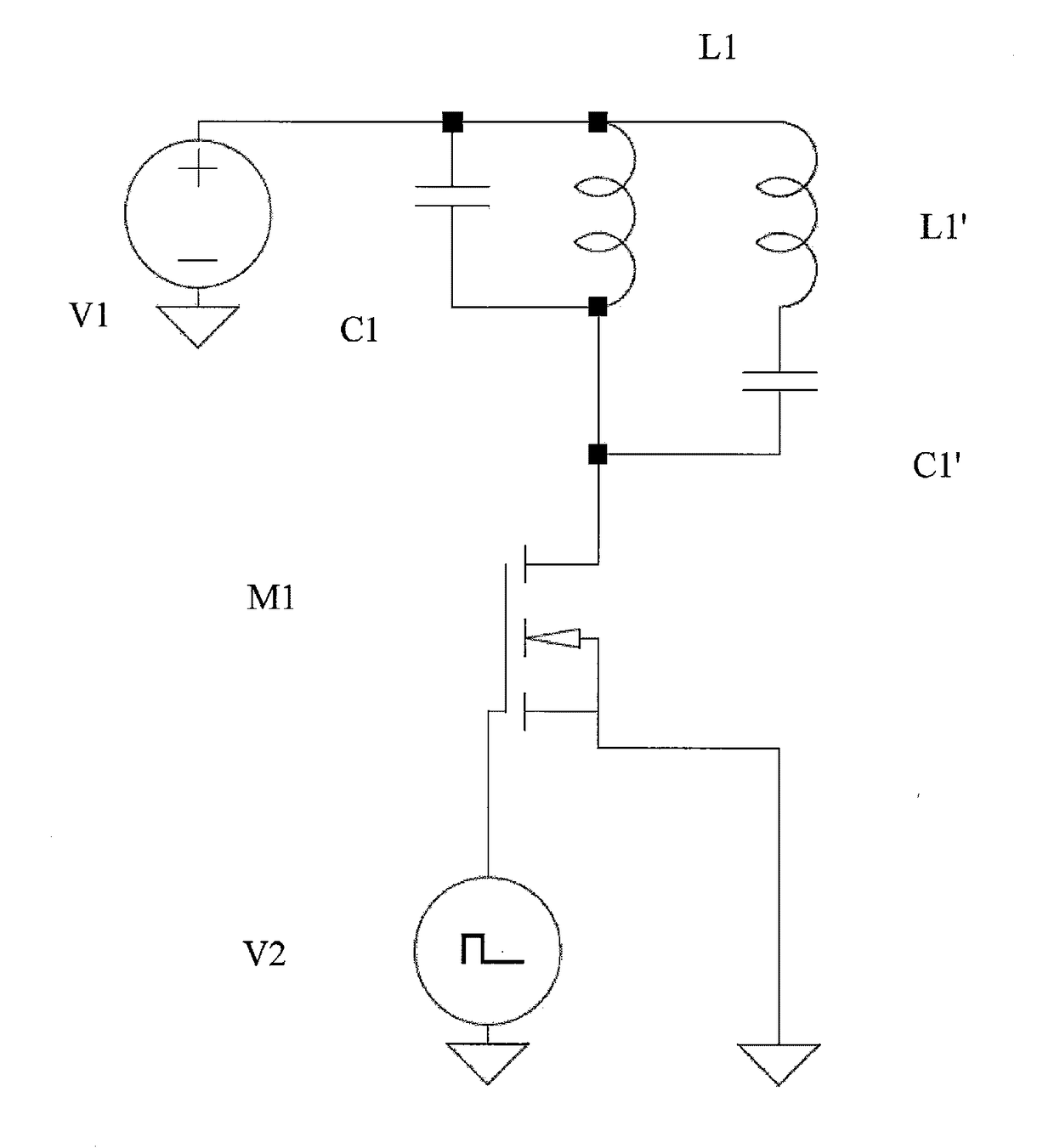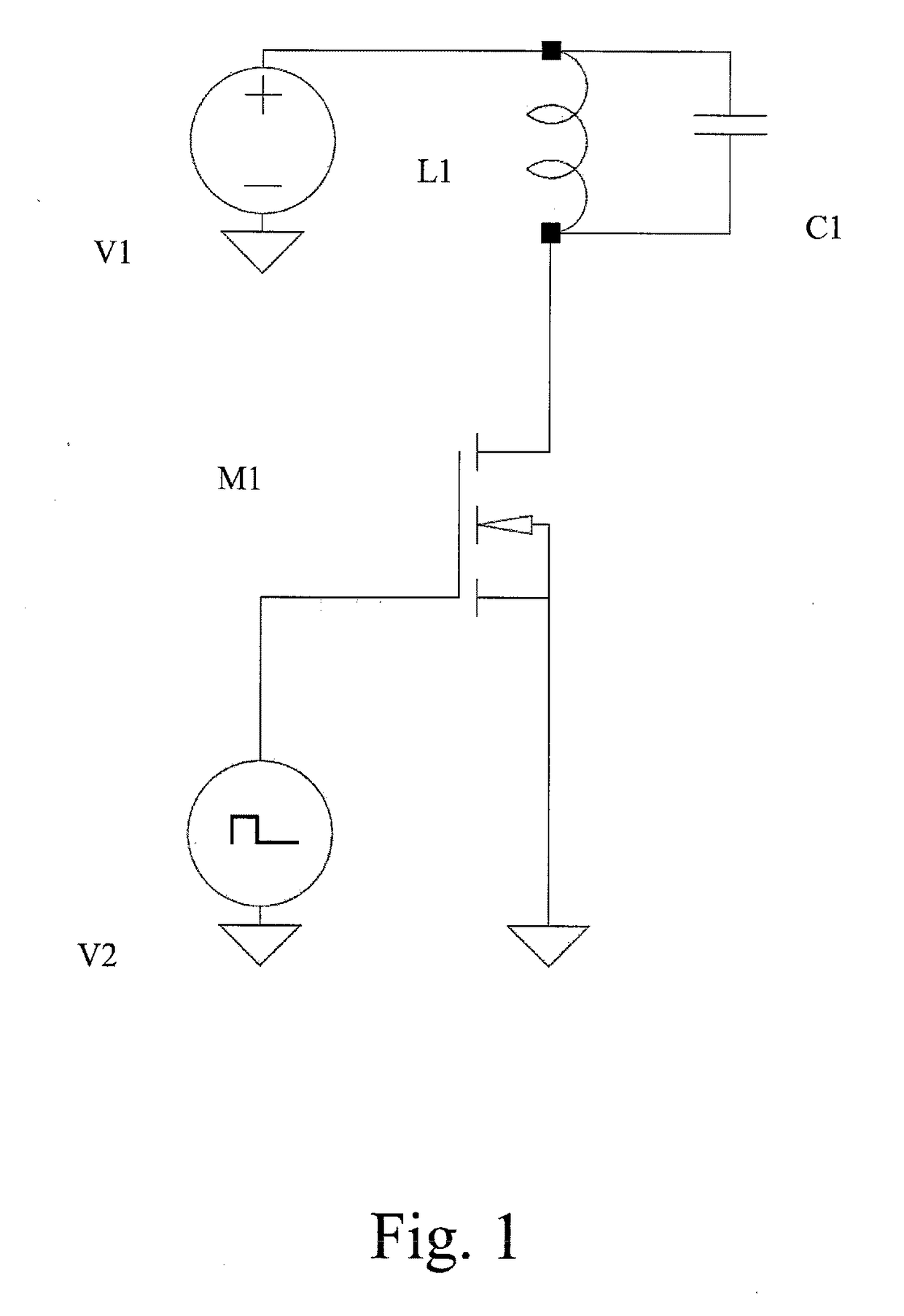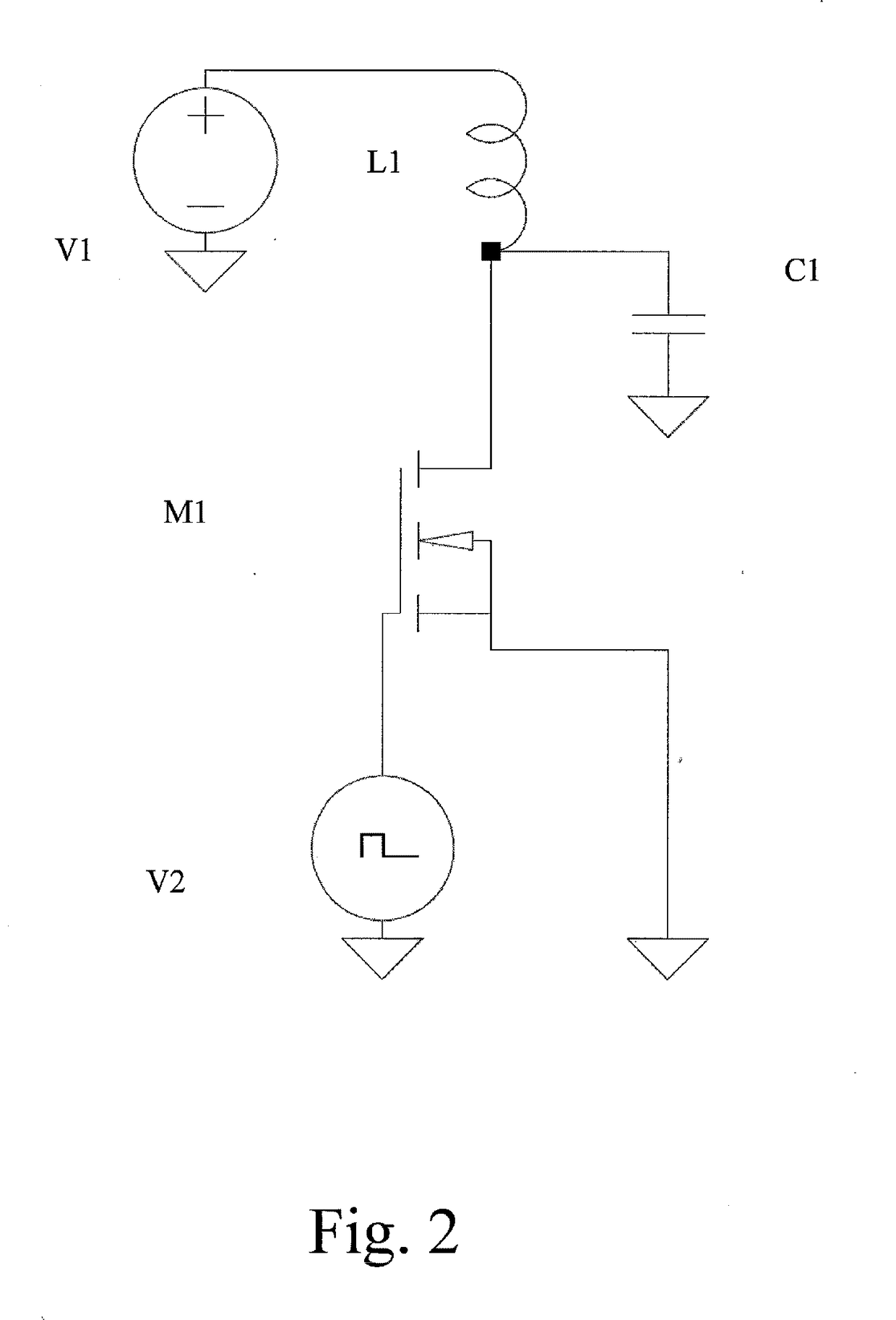Device and process for the production and transfer of heating and cooling power
- Summary
- Abstract
- Description
- Claims
- Application Information
AI Technical Summary
Benefits of technology
Problems solved by technology
Method used
Image
Examples
example 1
Implementation of a Prototype of Heating Element
[0078]A prototype of flat capacitor having the dielectric made up of two layers close to each other and adhering to the plates has been implemented. The first dielectric was a terpolymer PVDF-TrFE-CTFE (elettrocaloric material), whereas the second layer was constituted by air. Thus, the equivalent diagram is that of two capacitors connected in series, as depicted in FIG. 13.
[0079]The characteristics of the dielectric terpolymer were as follows:[0080]Side=0.03×0.03 m[0081]Surface S=0.0009 m2 [0082]Thickness of the PVDF-TrFE-CTFE film=10 μm
[0083]Taking into account the dielectric constant in the vacuum (ε0=8.854*10−12 F / m), the values of the capacitances C1 (terpolymer) and C2 (air) were calculated.
[0084]The value of C1 was calculated as follows:
[0085]Relative permittivity of the terpolymer εr1=37
ε1=327.6*10−12 F / m=εr1×ε0
C1=29.480*10−12 F (ε1*Surface / Thickness)
[0086]The value of C2 was in turn calculated as follows:[0087]Air thickness=4...
example 2
Experimental Tests
[0090]The capacitor made according to the example has been connected in parallel to an inductor, as in the circuit of FIG. 1.
[0091]A sinusoidal voltage with a working frequency of 87,600 Hz (87.6 kHz) and effective value of the voltage of 200 Vrms was selected to be set in the circuit.
[0092]Once the total capacitance of the capacitor is known, the inductance value that satisfies the relation with the working frequency of 87.6 kHz was calculated to be 1.86 mH.
[0093]The heat generated by the PVDF-TrFE-CTFE film was compared with the heat generated by an electrical resistance of 220Ω powered at 22.69 volts and a current absorption of 0.103136 A.
[0094]As the temperature of the two systems reached 50° C., it was possible to calculate the thermal power generated by the elettrocaloric film by detecting the electric power consumed by the resistor, equal to 2.34 W.
[0095]The power shares absorbed by each part of the capacitor prototype of Example 1 were calculated by taking ...
PUM
 Login to View More
Login to View More Abstract
Description
Claims
Application Information
 Login to View More
Login to View More - R&D
- Intellectual Property
- Life Sciences
- Materials
- Tech Scout
- Unparalleled Data Quality
- Higher Quality Content
- 60% Fewer Hallucinations
Browse by: Latest US Patents, China's latest patents, Technical Efficacy Thesaurus, Application Domain, Technology Topic, Popular Technical Reports.
© 2025 PatSnap. All rights reserved.Legal|Privacy policy|Modern Slavery Act Transparency Statement|Sitemap|About US| Contact US: help@patsnap.com



